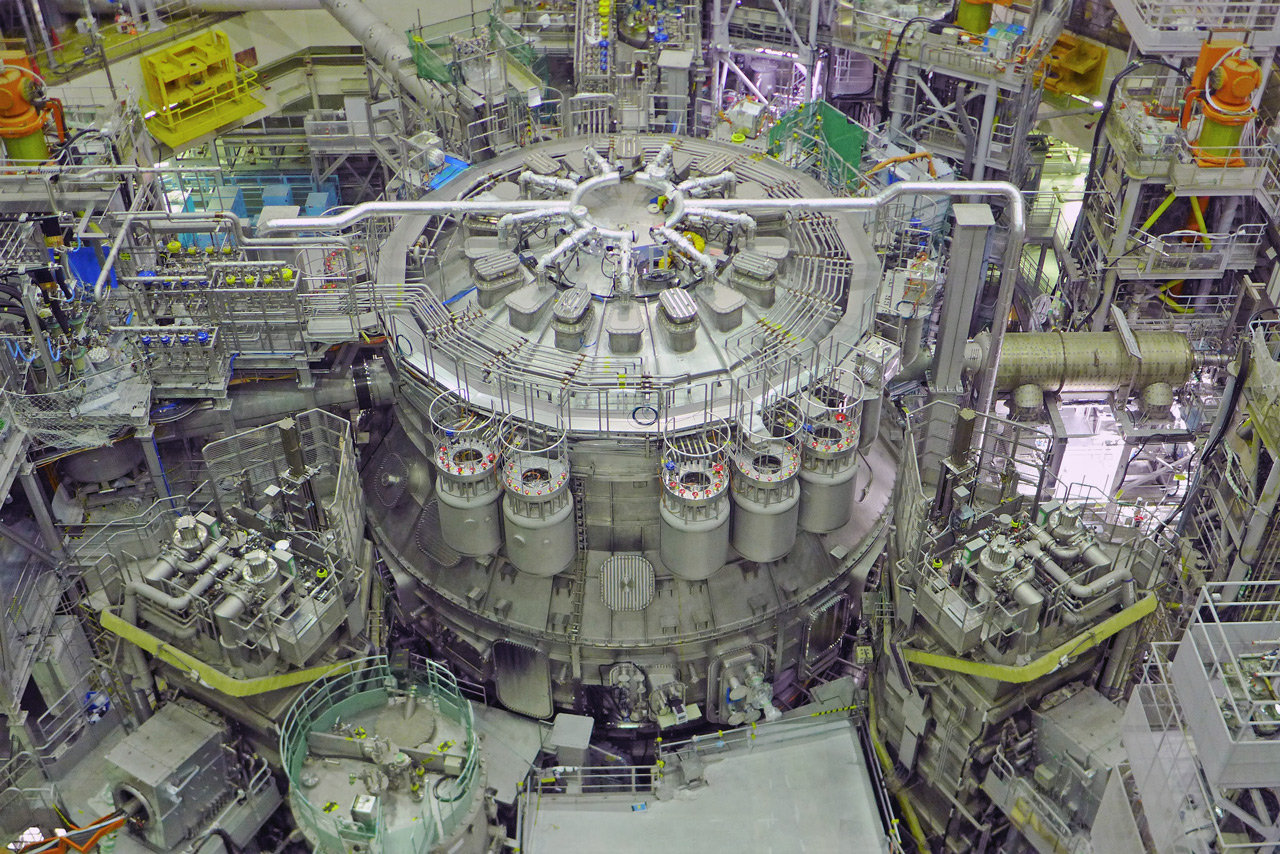JT-60SA magnets cooled down at -268°C

View of JT-60SA device, resulting from the collaboration between Europe and Japan as part of the Broader Approach Agreement. The facility is located at the seat of the National Institutes for Quantum Science and Technology (QST), Naka, Japan. © F4E/QST.
Operations at JT-60SA have resumed at galloping pace. The summer recess in other parts of the world has been the perfect opportunity for the team of engineers, from Europe and Japan, to proceed with their schedule. After having successfully conducted a series of repairs of the biggest fusion device, until ITER is operational, the interest of scientific community is now shifting to this experiment. Everybody is eager to learn from it and its future enhancements.
JT-60SA belongs to the family of tokamaks like ITER. These devices will use powerful superconductive magnets to confine the hot plasma that will flow inside the vacuum vessel. Step by step the magnets need to be cooled down so that the coils become superconducting. This is essential to allow current run through without resistance and keep plasmas burning longer. Meanwhile, the vacuum vessel, the chamber that will house the fusion reaction, needs to get warmed up to remove any impurities from its surface.
Last week the coils reached approximately 4.8K (-268°C). The central solenoid, at the heart of the device, was cooled down at about 17 K (-255°C). It will initiate the plasma by letting the current through. In addition, the 18 toroidal field coils and 6 equilibrium field coils, whose aim is to confine and control the stability of the plasma, reached -264°C. These results provided the technical team with sufficient assurances that they are on the right path. Parallel to this, the vacuum vessel reached a baking temperature of 194°C, allowing the cleaning process to advance, so as to ensure the right conditions for plasma operations.

The teams of engineers are following closely operations from the control room and remain cautiously optimistic about the next big milestone. In September, they will also have the opportunity to welcome ten students from Europe and ten from Japan, as part of the JT-60SA International Fusion School (JIFS) Summer School taking place 4-15 September in Naka, Japan. The mission of the initiative is to prepare the next generation of fusion scientists by offering the possibility to become more familiar with this promising fusion device.